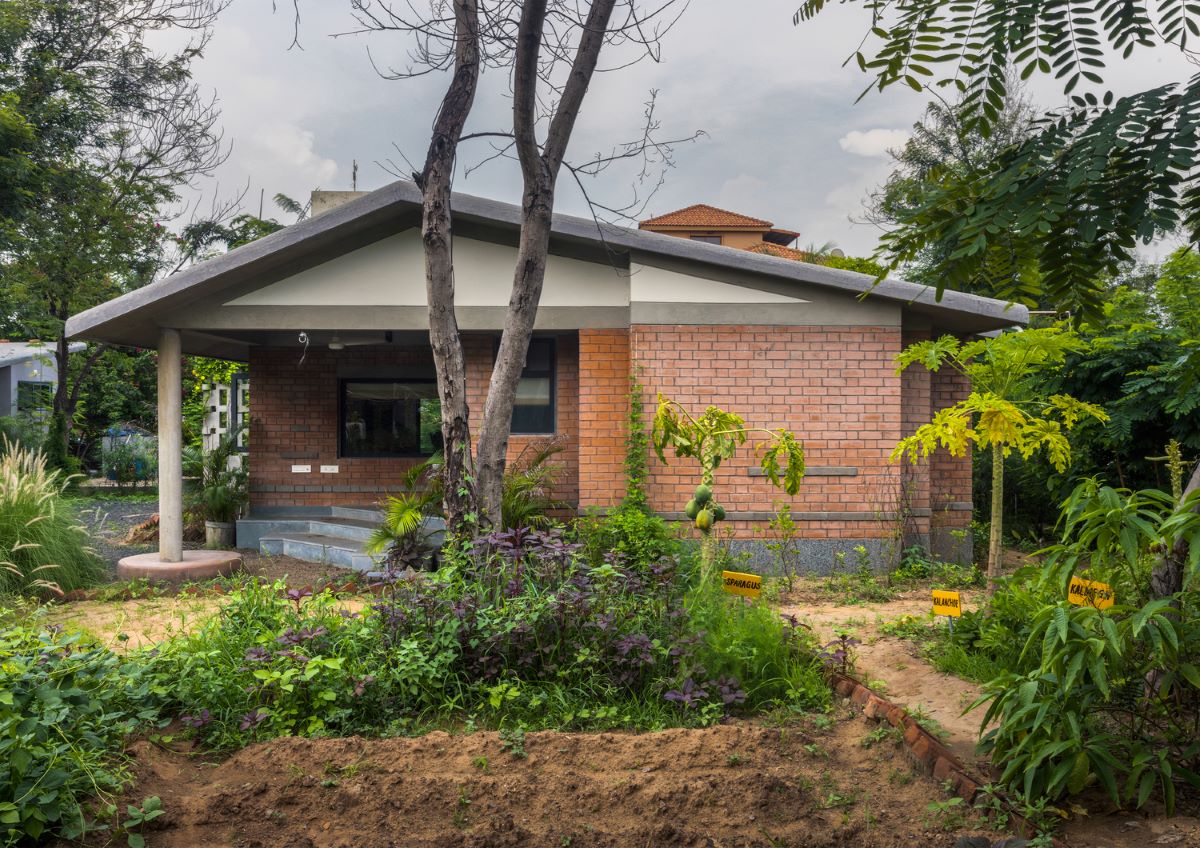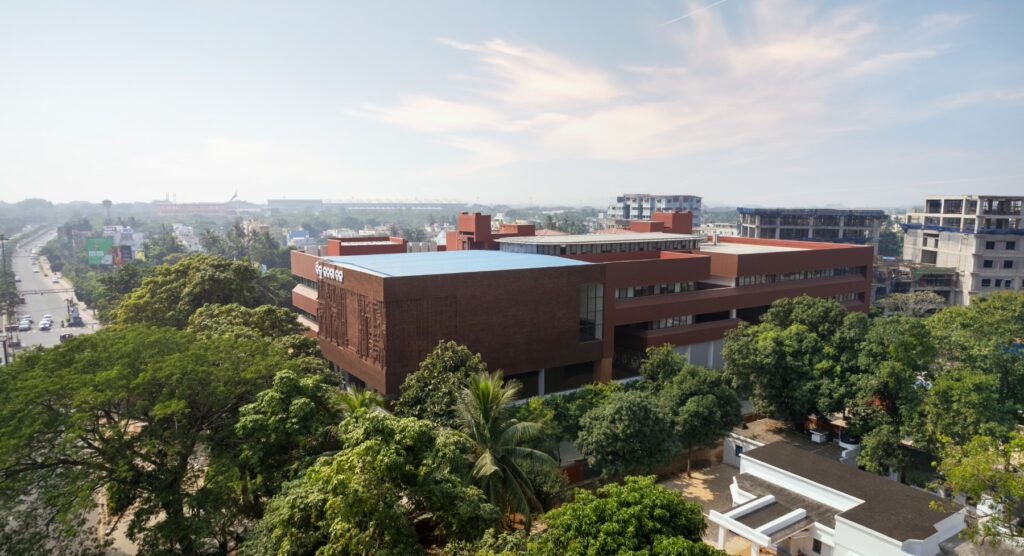
Biju Janata Dal, one of Odisha‘s major political parties, has dedicated itself to the inclusive development of the people. The party’s ethos draws on its staunch belief in the state’s masses and their potential to drive change. This inclusivity and deep-seated regionalism, which lie at the heart of BJD’s core values, is expressed in the design for its new headquarters in Bhubaneswar, designed by Studio Lotus. The building draws from the state’s rich heritage and local culture to celebrate the party’s ethos and instil civic pride.
The original brief called for a five-storey structure. However, the studio proposed a more humble three-storeyed volume to preserve the building’s connection to the street and the citizens while accommodating the stipulated functions. This conscious decision also minimised any redundant construction from the outset.
The campus’ ground plane is elevated to form a plinth for public functions and community events. This deliberate elevation, with its direct visual connection with the street, fosters an open and transparent connection with passersby, bringing them into the fold and blurring the threshold of public and private space. Other public spaces on the level include a cafeteria, a library, and a 360° audio-visual gallery.
A double-height auditorium punctuates the upper floors in plan and elevation—protruding from the monolithic exterior along the eastern face to mark a subtle shift in the otherwise planar built form. The 198-seater space is designed to host official and ceremonial events, as well as serve as a platform for local musicians and performers to showcase Odisha’s rich cultural heritage.

On the upper levels, the offices feature open-plan layouts to foster a collaborative work environment. The first floor comprises a combination of workspaces, meeting rooms, and cabins for the upper management. The second floor is primarily reserved for party leadership, with private cabins, resting areas, and video conference rooms. Ribbon windows emphasise the horizontality of the massing while granting generous views of the verdant landscape beyond. Inside, the palette is a nod to the regional context, playing with a gentle contrast of terracotta tiles, exposed concrete, and local stone like Odisha grey granite and khondalite.
The distinctive facade, designed in collaboration with Siddhartha Das Studio, features sculptural reliefs in laterite and terracotta. Hand-chiselled by local stoneworkers, they depict intricate motifs derived from traditional handloom weaving patterns such as ikat and sambalpuri. They also feature abstract symbols referencing agrarian customs, the indigenous paintings of the Santhal tribes, and the Lingaraja-style architecture of the famous Konark and Puri temples. Dovetailing indigenous skills with contemporary influences, the use of local laterite and terracotta tiles on the facade reflects the party’s rooted yet forward-thinking vision. An intentional departure from standard glass and ACP panels, this intervention also enables natural ventilation, regulating indoor thermal comfort.

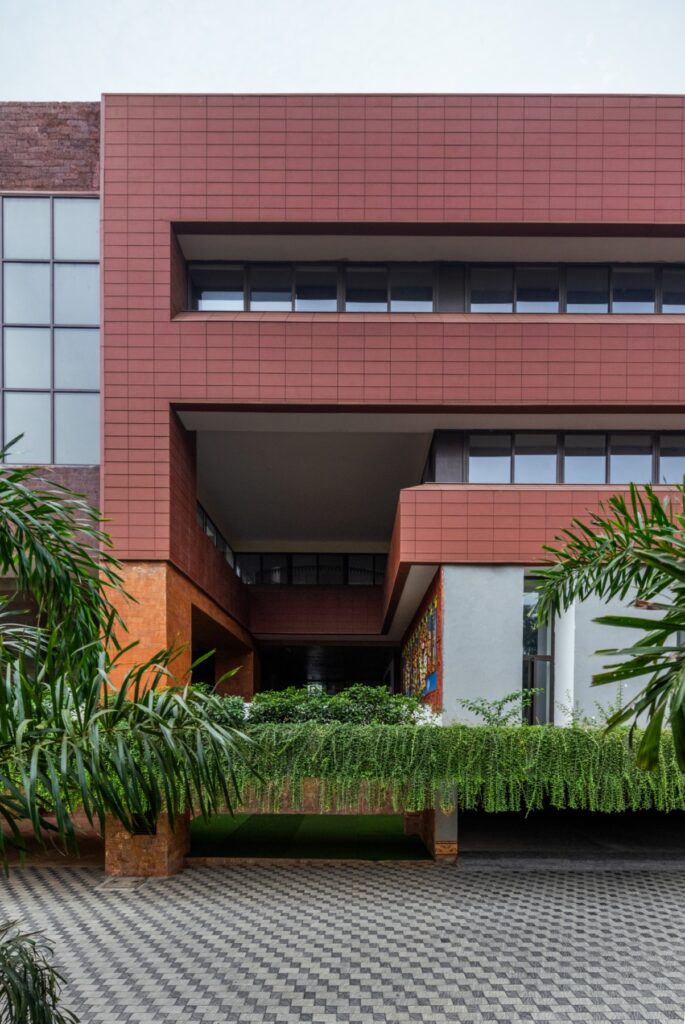
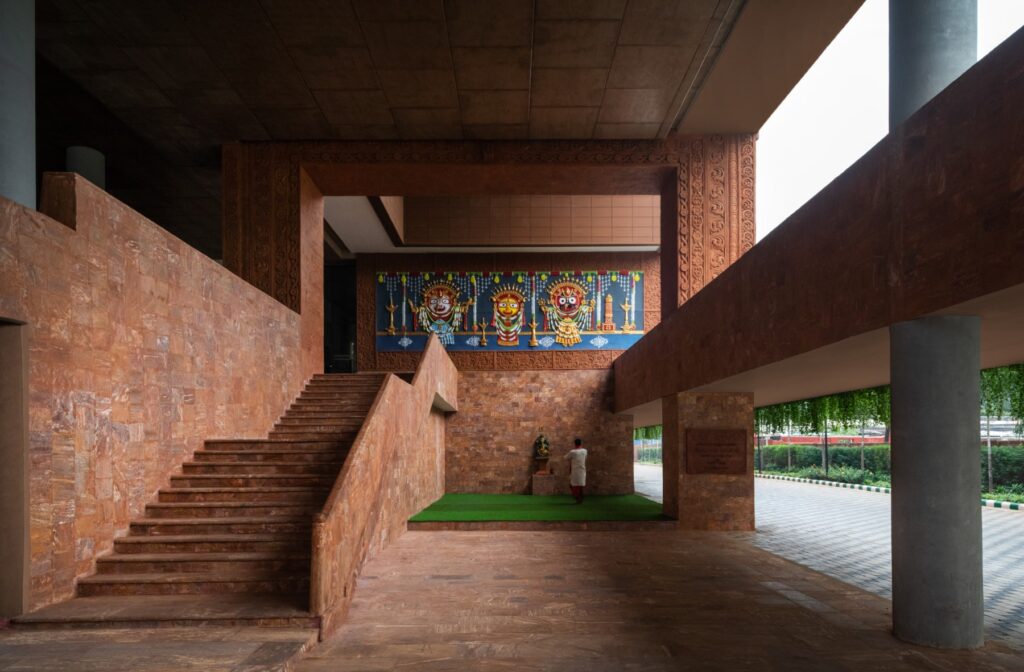
The deliberate focus on engaging with local crafts and artisans in meaningful ways extends beyond the facade. Dhokra-inspired metalwork and sculpted khondalite benches in the interiors lend a new dimension to vernacular skills and improve regional scopes of employment.
The design incorporates a series of passive and active climate-responsive measures to address concerns of building performance and sustainability. A window-to-wall ratio of 60:40 reduces reliance on artificial lighting and minimises glare. The planning emphasises deep overhangs and terraces that offer shade and limit heat gain. Internal courtyards welcome diffused light, nature, and breeze, significantly increasing the occupants’ thermal comfort. The landscape strategy incorporates native flowering trees and shrubs along the perimeter, thoughtfully curated to celebrate the seasonal blooms while contributing to a comfortable microclimate. Fundamental sustainability measures such as rainwater harvesting, groundwater recharge, and provisions for solar panels are also integrated into the design scheme.


The design of the BJD Party Headquarters seeks to challenge the conventionally impervious nature of government office buildings. By integrating public functions into the program and engaging local craftspeople in the construction process, the intervention reaffirms the party’s dedication to inclusivity and transparency, advancing the well-being of the masses. The building has rapidly evolved into a landmark, not through the creation of an imposing volume but through its rooted, graceful presence within its context.
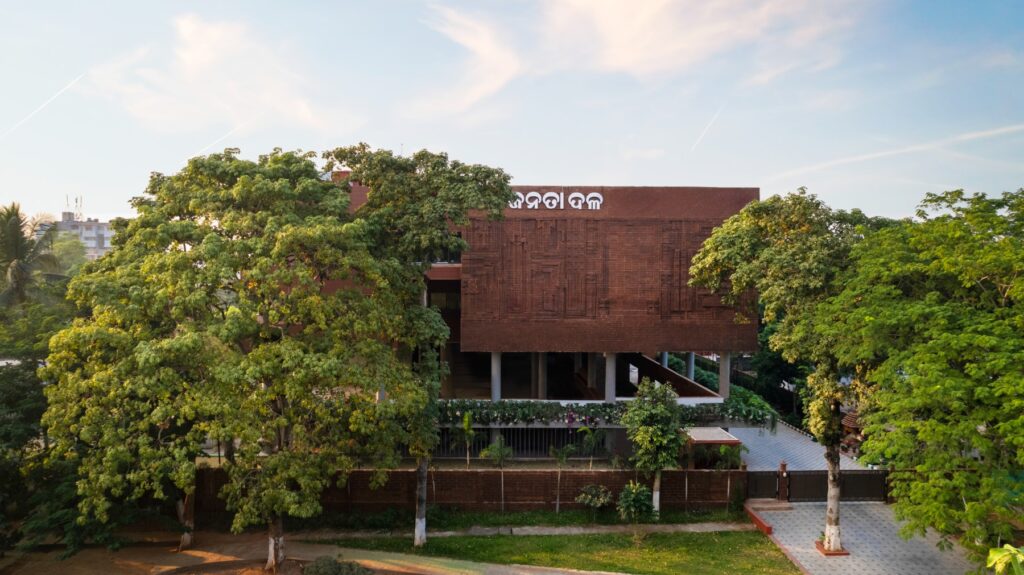
Project Details:
Name of Project: Biju Janta Dal Party Headquarters
Location: Bhubaneswar, Odisha
Status: Built (March 2023)
Site Area: 1.19 Acre
Built-Up Area: 1,22,546 sq. ft.
Typology: Commercial / Institutional
Designed by: Studio Lotus
Design Team—Architecture: Sidhartha Talwar, Anusha Bajpai, Agastya Tripathi, Manish Kumar, Vaibhav Tomar, Muskan Chowdhary
Design Team—Interior: Asha Sairam, Neelam Das, Rushali Malhotra
Description: Studio Lotus
Photographs: Suryan // Dang
Consultants
Structural: Mr. Madhav Deshpande (Desman)
MEP: Mr. Yogesh Pal (OneMEP)
Landscape: Ms. Savita Punde (DesignCell)
Contractors
Structural/Civil: Santosh Panda
Facade/Citadel: Vinay Kumar

